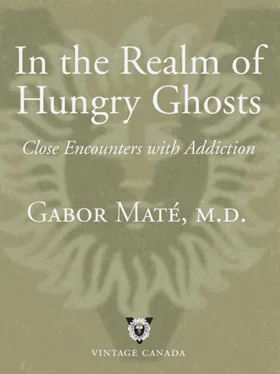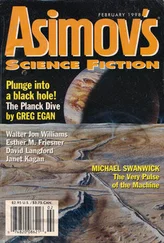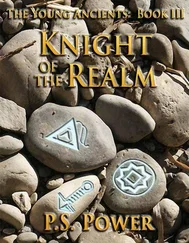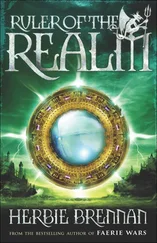In Chapter 16 I pointed out that the role of the cortex, the brain’s executive part, is more to inhibit than to initiate. Impulses to act are generated in lower brain systems, but the job of the cortex is to censor some and permit others. As a prominent researcher expressed it, it’s not a matter of free will but of “free won’t.” *25
How much time elapses between impulse and action? Electrical studies of brain function show that it’s about half a second. For most of that time we are not aware of what our brain is proposing to do. In other words, there is a lag period between the impulse arising as a physical signal in the brain and our becoming aware of it as a conscious urge. In a well-functioning cortex the interval between awareness of the impulse and the activation of the muscles that will carry out the impulse is only one-tenth to one-fifth of a second. 6Amazingly, it’s only in this briefest of intervals that the cortex can suppress behaviour it judges to be inappropriate. That’s the gap where, for example, we can stop ourselves from raising our hand in anger or saying something hurtful. In that sliver of time we see ourselves about to perform the act and, if necessary, we can stand between ourselves and the behaviour in question.
Many people have watched themselves helplessly as they began to do something they knew would be unhelpful or self-defeating. That’s the experience of brain lock: the clutch is stuck, so nothing can be done to stop the motor of “doing” from engaging. A failure of the brain to go into “neutral” may occur in any human being who is under physical strain, such as fatigue or hunger, or when they are emotionally stressed. In the brain of the addict the problem is worsened because her neurological circuits are impaired even under ordinary circumstances. This can be explained by what happens in the split second before the impulse emerges into awareness. In that fraction of a moment—which is still longer than the splinter of time devoted to conscious choice, when we can decide not to do something inappropriate—the brain carries out what is called “pre-attentive analysis.” Pre-attentive analysis is the unconscious evaluation of what goals the brain circuits judge to be essential or irrelevant, valuable or worthless, desirable or unwanted. The cortex is primed to select actions that will achieve the goals set by this pre-attentive process.
And what is the brain of the addict likely to value? Recall that the brain is in large part the product of early influences and that the attachment-reward and incentive-motivation systems of the addicted brain were directed toward maladaptive habits when the child’s needs for emotional nourishment were frustrated and denied. In the words of the seminal researcher Jaak Panksepp, “drug addictions wouldn’t occur unless they were related to natural reward processes of some kind.” Habits and the brain circuits that maintain them form around substances and behaviours that promise instant if only temporary satisfaction.
“Those habit structures are so incredibly robust, and once they form in the nervous system they will guide behaviour without free choice,” Dr. Panksepp said in a personal interview. “Addicts become addicts because they develop these habit structures which become totally focused on non-traditional rewards, drug rewards. They get hooked and they can’t break out of that psychological imprisonment.”
Thus, the addict comes to make his choice with a brain that overvalues the addictive substance or behaviour and undervalues the healthy alternatives. Impulses favouring the addiction process arise. The cortex, whose job it is to censor inappropriate actions—to exercise the “free won’t”—is hobbled. Brain lock sets in: the milliseconds that afford the possibility of “just saying no” flash by.
“The whole decision-making process is…it’s not even really a process,” a patient told one of my colleagues, an addiction physician in the Downtown Eastside. “You just decide to use. There is not a whole lot of thought going on there. You don’t really…you don’t really weigh the pros and cons, it’s too overwhelming, right? You simply do it, with total disregard for anything else.” 7
As I write this chapter, on October 29, 2006, I’m paged from Vancouver Hospital. A patient of mine, whom I’ll call Terence, has been discharged involuntarily. “He broke the contract,” his nurse informs me, in an apologetic tone. Terence is a thirty-two-year-old heroin and cocaine addict with multiple medical problems, including HIV. I have known him for a few months. In speaking with him, one feels that every request is a manipulation, every word hides an agenda and every interaction serves some ulterior motive. I doubt he is aware of how he appears to others; to borrow from Nietzsche, he lies his way out of reality because he has been hurt by reality. The manipulation and dishonesty have been his automatic defences since childhood. He must be terrified that without them he will suffer deprivation.
Admitted to a medical ward last week for an infectious illness, two days later he was arrested at a nearby supermarket for shoplifting. The police took him back to hospital, where he signed an undertaking not to leave the unit and not to engage in any illegal behaviour. Today he stole a nurse’s jacket, wallet and keys and disappeared for several hours. The jacket was retrieved; the money and keys were gone. The hospital saw no alternative but to discharge him, despite the fact that his infection had not been completely eradicated.
Terence’s behaviour patterns do not change regardless of their disastrous consequences: over the years he has alienated every care-giver who has worked with him, has repeatedly sabotaged his medical treatment and his health, and has ensured that no facility in Vancouver other than the Portland Hotel will even consider having him as a resident. If we could peer into his brain at the moment he was about to lift the nurse’s jacket from the ward office, I doubt we would see much activity in the segments that control impulse and generate conscious will; more likely the dopamine circuits of incentive, excitement and thrill would predominate. It’s less a conscious decision to steal that led to Terence’s expulsion from hospital than an inability not to, given the opportunity. No powerful “free won’t” operates in his brain. Later he’ll be filled with regret but at the next opportunity will re-enact exactly the same scenario. How much freedom does he really have?
The overvaluing of the addictive object, act, relationship or behaviour exists in all addictions, as does the brain lock phenomenon. In the substance addict it is fortified, as we have seen, by the effect of the drugs themselves on the brain. Drugs damage the parts of the brain—already impaired to begin with—that exercise conscious will. In a passage I partially quoted in Chapter 14, Dr. Nora Volkow, Director of the National Institute on Drug Abuse in the U.S., has written, “This aberrant behavior has traditionally been viewed as bad ‘choices’ that are made voluntarily by the addict. However, recent studies have shown that repeated drug use leads to long-lasting changes in the brain that undermine voluntary control. ” 8
The men and women I work with have had every possible negative consequence visited upon them. They have lost their jobs, their homes, their spouses, their children and their teeth; they have been jailed and beaten, abused and raped; they have suffered HIV infection and hepatitis and infections of the heart valves and of the backbone; they have had multiple pneumonias and abscesses and sores of every sort. They have seen close friends die young of overdose or disease. They are far from naïve about the seriousness of the matter and require no more convincing or coercing. And yet they will not, unless something transforms their perspective on life, abandon their compulsion to use drugs. We, as a society, cannot respond to their predicament with unenforceable laws, moral preaching and medical practices that do not employ the full range of possible options.
Читать дальше












